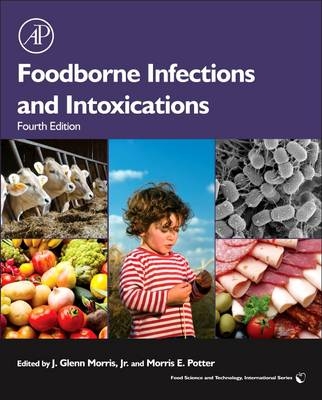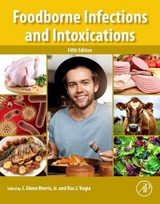
Foodborne Infections and Intoxications
Academic Press Inc (Verlag)
978-0-12-416041-5 (ISBN)
- Titel erscheint in neuer Auflage
- Artikel merken
The accelerated globalization of the food supply, coupled with toughening government standards, is putting global food production, distribution, and retail industries under a high-intensity spotlight. High-publicity cases about foodborne illnesses over recent years have heightened public awareness of food safety issues, and momentum has been building to find new ways to detect and identify foodborne pathogens and eliminate food-related infections and intoxications. This extensively revised 4e covers how the incidence and impact of foodborne diseases is determined, foodborne intoxications with an introduction noting common features among these diseases and control measures that are applicable before and after the basic foodstuff is harvested.
Dr. J. Glenn Morris is a physician epidemiologist with board certification in both internal medicine and infectious diseases. Morris started his public health career at the Centers for Disease Control and Prevention where he was an Epidemic Intelligence Service officer with responsibility for national foodborne disease surveillance. He was on the faculty of the University of Maryland School of Medicine for 24 years, where he served as Chair of the Department of Epidemiology and Preventive Medicine; he currently directs the Emerging Pathogens Institute at the University of Florida. He has served on four National Academy of Sciences expert committees dealing with food safety and was a member of the National Academy’s Food and Nutrition Board. In the mid-1990s, he worked with the Food Safety Inspection Service in the U.S. Department of Agriculture on the first major revision of food safety regulations since 1906 and has continued to work on scientific and regulatory approaches to control of foodborne diseases.
Section 1: Foodborne Disease: Epidemiology and Disease Burden
1. Estimates of disease burden associated with contaminated food in the United States and globally
2. The Foods Most Often Associated with Major Foodborne Pathogens: Attributing Illnesses to Food Sources and Ranking Pathogen/Food Combinations
3. Microbial Food Safety Risk Assessment
4. Development of Risk-Based Food Safety Systems for Foodborne Infections and Intoxications
Section 2: Foodborne Infections: Bacterial
5. Pathogen updates: Salmonella
6. Clostridium Perfringens Gastroenteritis
7. Vibrios
8. Escherichia coli
9. Campylobacter
10. Yersinia
11. Listeria
12. Shigella
13. Streptococcal Disease
14. Aeromonas and Plesiomonas
15. Brucellosis
16. Cronobacter species (formerly Enterobacter sakazakii).
Section 3: Foodborne Infections: Viral
17. Noroviruses
18. Hepatitis A
19. Hepatitis E
20. Astroviruses as Foodborne Infections
21. Rotavirus
22. Sapovirus
Section 4: Foodborne Infections: parasites, and others
23. Toxoplasma gondii
24. Giardia
25. Cyclospora
26. Cryptosporidium
27. Mycobacterial species
28. Trichinella
29. Food Safety Implications of Prion Disease
Section 5: Intoxications
30. Clostridium botulinum
31. Staphylococcal Food poisoning
32. Bacillus cereus
33. Mycotoxins
34. Seafood Intoxications
35. Plant Toxins
Section 6: Policy and Prevention of Foodborne Diseases
36. Effects of food processing on disease agents
37. Food safety post-processing: transportation, supermarkets, restaurants
38. HACCP and other regulatory approaches to prevention of foodborne diseases
39. The legal basis for food safety regulation in the US and EU
| Reihe/Serie | Food Science and Technology |
|---|---|
| Verlagsort | San Diego |
| Sprache | englisch |
| Maße | 191 x 235 mm |
| Gewicht | 1130 g |
| Themenwelt | Medizin / Pharmazie ► Gesundheitsfachberufe ► Diätassistenz / Ernährungsberatung |
| Medizin / Pharmazie ► Medizinische Fachgebiete ► Mikrobiologie / Infektologie / Reisemedizin | |
| Studium ► 2. Studienabschnitt (Klinik) ► Pharmakologie / Toxikologie | |
| ISBN-10 | 0-12-416041-7 / 0124160417 |
| ISBN-13 | 978-0-12-416041-5 / 9780124160415 |
| Zustand | Neuware |
| Informationen gemäß Produktsicherheitsverordnung (GPSR) | |
| Haben Sie eine Frage zum Produkt? |
aus dem Bereich



